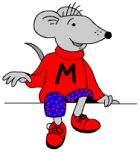Baby dragon is learning to breathe fire by adding two to numbers. Can you help him practice?
[flash http://mathsblog.co.uk/wp-content/uploads/2008/04/add22.swf]
Maths help for parents of children aged 5 to 11
Baby dragon is learning to breathe fire by adding two to numbers. Can you help him practice?
[flash http://mathsblog.co.uk/wp-content/uploads/2008/04/add22.swf]
Perhaps the most efficent is to add 40 to 67 to make 107 and then add on the extra 6 to make 113.

It’s been a while since I posted anything for year 4 so here is another addition worksheet. Not easy, and a number of skills need to have been learned to do these in an efficient manner.
For example: looking at ‘add 46 to 67’.
There a a number of ways to do this. Perhaps the most efficient is to add 40 to 67 to make 107 and then add on the extra 6 to make 113.
The second part of the sheet is a reminder of some of the ways that addition questions can be phrased.
On a calendar moving up one position will subtract 7 days – useful when counting back.
 Another set of questions using tables and charts. Children often get confused by questions which say that an event was earlier or later when looking at a calendar. If it was earlier then the number of days have to be subracted. On a calendar moving up one position will subtract 7 days – useful when counting back.
Another set of questions using tables and charts. Children often get confused by questions which say that an event was earlier or later when looking at a calendar. If it was earlier then the number of days have to be subracted. On a calendar moving up one position will subtract 7 days – useful when counting back.
Booster maths worksheet: Time (p 4)
An old favourite with the SATs question writers is reflective symmetry. During the test children are given tracing paper or a small mirror. If using the mirror they need to line it up along the dotted line and draw the reflection. if the shape is drawn on squared paper it can be easier to draw it by hand taking each square in turn.
simple addition of single digits, keeping below 10
 Here is another in our series of simple addition of single digits, keeping below 10. At first children will count on, probably using their fingers or apparatus such as cubes. In time they need to be able to remember the answers off by heart – but this takes an awful lot of practice.
Here is another in our series of simple addition of single digits, keeping below 10. At first children will count on, probably using their fingers or apparatus such as cubes. In time they need to be able to remember the answers off by heart – but this takes an awful lot of practice.
Being able to read information from a calendar may seem pretty straightforward to us, but many children do not come across these in their everyday life and hence have problems working out how to extract the information.
The questions here are aimed at boosting a level 3 towards a level 4. For those children aiming at a Level 5 care must be taken to read the tables and charts accurately as they are a good way to pick up easy marks.
This free maths worksheet also looks at a.m. and p.m.
Time is a popular theme with the test writers and they are pretty keen on testing knowledge of a.m. and p.m. and how the 24 hour clock works. These straightforward questions are of the kind found early in the test and are easy marks to pick up to ensure a Level 4.
This is a good free maths worksheet to encourage systematic ordering of data.
 This is a good free maths worksheet to encourage systematic ordering of data. Lists of highest mountains, longest rivers and largest turtles are given, but they are not in order. There is a definite technique in efficiently putting these in order as it is very easy to miss one and not so easy to rearrange them if you are doing it on paper!
This is a good free maths worksheet to encourage systematic ordering of data. Lists of highest mountains, longest rivers and largest turtles are given, but they are not in order. There is a definite technique in efficiently putting these in order as it is very easy to miss one and not so easy to rearrange them if you are doing it on paper!
For example, take the mountains. They are all over 8000 m in height, so the key number to look at is the hundreds digit. Find the highest (Everest) and mark a 1 next to it. Find the second highest and mark it with a 2 and so on. Then rewrite them according to the marks.
Some good spin-off work here for Geography – can they find the mountains, rivers etc?
 We usually think of the terms convex and concave in relation to mirrors and lens. The word convex means curving out or bulging out but it can also be applied to polygons. A convex polygon is one where all the internal angles are less than 180 degrees – the type that we are most familiar with. A concave polygon will have an interior angle greater than 180 degrees – it looks as if it has been pushed in on one side.
We usually think of the terms convex and concave in relation to mirrors and lens. The word convex means curving out or bulging out but it can also be applied to polygons. A convex polygon is one where all the internal angles are less than 180 degrees – the type that we are most familiar with. A concave polygon will have an interior angle greater than 180 degrees – it looks as if it has been pushed in on one side.